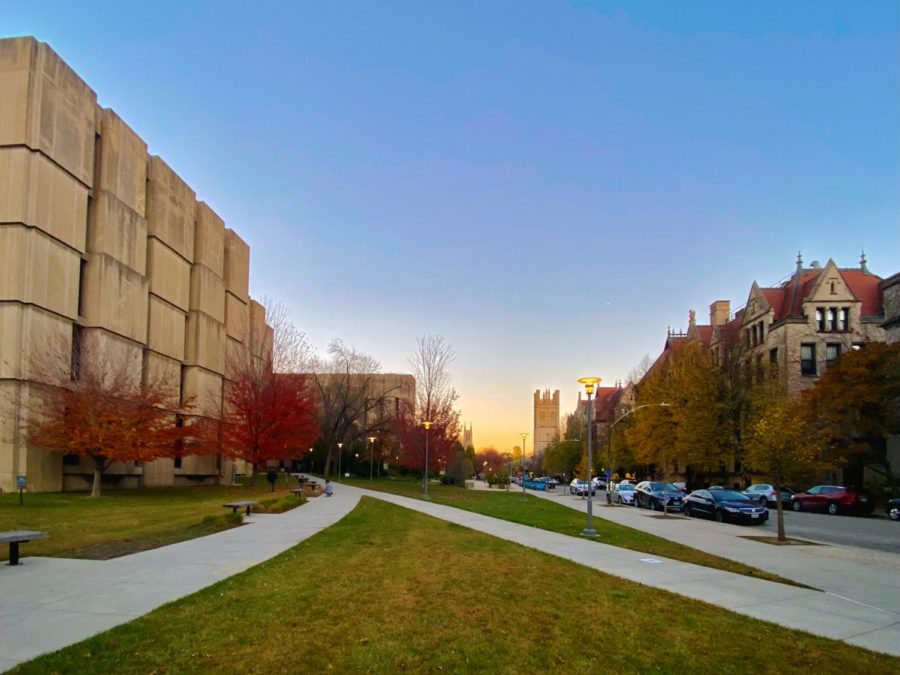Second Amendment scholars and law professors gathered to discuss legal barriers to reducing gun violence in America on Friday, March 6, as part of the University of Chicago Symposium on Gun Violence.
The symposium included policy-makers, medical experts, behavioral scientists, and members of the philanthropic and business communities, who were brought together to “highlight multi- and interdisciplinary initiatives addressing the complexities of gun violence,” according to the Law School’s website.
The “Legal Issues” panel, moderated by Dean of the Law School Thomas Miles, began with a discussion about the Second Amendment and D.C. v. Heller, a 2008 Supreme Court case which was the first to establish that individuals have a right to bear arms.
Darrell Miller, a law professor at Duke University, referred to the D.C. v. Heller case as a “very deliberate and successful campaign” to turn gun ownership into positive law, waged by the National Rifle Association (NRA). However, Miller noted that beyond asserting that individual gun ownership is a constitutional right, D.C. v. Heller left many important questions related to gun ownership unanswered.
“So what did Heller say beyond that a person has a right to an operable firearm in the home for purposes of self-defense? Well, it didn’t say much,” Miller said.
He explained that a lack of clarity relating to questions surrounding the types of weapons protected, the extent they can be carried out of the home, and the ways in which they can be regulated is the subject of current litigation. Despite this, Miller also noted that “the Heller decision was very, very express about saying that it was not destroying all [gun] regulation.”
Bill Taylor, a lawyer at the nonprofit organization Everytown for Gun Safety, explained that the Supreme Court could approach cases related to the Second Amendment by considering social science studies and modern state interests or by consulting “texts, histories, and tradition.” The latter method, Taylor noted, is favored by Justice Brett Kavanaugh, the Court’s newest addition.
“That is the next question that is going to determine a lot of how Second Amendment litigation goes forward,” Taylor said.
The panel also discussed existing statutory framework for gun regulation in the United States, especially the Protection of Lawful Commerce in Arms Act (PLCAA), which shields gun manufacturers from prosecution if guns they produced are used to commit crimes.
“When [PLCAA] was passed in 2005, the NRA said this is the most significant piece of pro-gun legislation in the last 20 years,” Taylor said. He explained that while other industries are burdened with things like legal fees if their products cause harm, gun dealers are largely immune from this.
“There is no incentive to make safer guns—to engage in safer industry practice,” Taylor said.
Professor John Rappaport said that the insurance industry could, moving forward, play an important role in the regulation of guns.
“Insurance can be a mechanism for forcing people to internalize the costs of owning dangerous products by using risk-based pricing. This is the same thing we do with cars,” Rappaport said.
However, Miller noted that this analogy is somewhat legally ineffective. “I think the gun rights activists would say the car analogy doesn’t work because you don’t have a right to own a car,” Miller said.
Currently “the insurance industry is doing very, very little in this field,” Rapport said. “When you look at life insurance policies, for example, insurance companies don’t even ask about gun ownership. They [do] ask about scuba diving.”
The panel also discussed the Tiahrt Amendment as another example of legislation that had created barriers for legal gun regulation. The amendment prevents the Bureau of Alcohol, Tobacco, Firearms and Explosives (ATF) from disclosing firearm trace data.
These data, Taylor explained, could be hugely influential in crafting and informing legislation and lawsuits related to gun violence and gun violence victims. “Social scientists, researchers, [and] legislators trying to enact informed legislation can’t even get this information from ATF or law enforcement,” Taylor said.
The panel concluded with a discussion about a nationwide increase in felon in possession prosecution—laws that attempt to prevent felons from possessing firearms.
“Locally, Mayor Lightfoot has been talking about the fight against gun violence and has very much announced an intention to use policing and criminal courts and incarceration to keep gun offenders off the streets,” Rappaport said.
Rappaport cast doubt on the effectiveness of “felon in possession” prosecution as a way to keep communities safer and emphasized that these laws disproportionately affect communities of color.
“I think there is a lot of room here for research on whether this use of criminal apparatus and all these arrests and prosecutions [are] actually keeping our communities safer. I don’t think that it is, and it’s having obvious costs and those costs are being borne disproportionately by communities of color,” Rappaport said.








